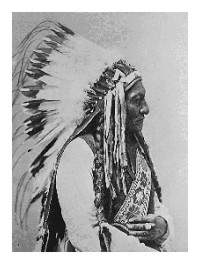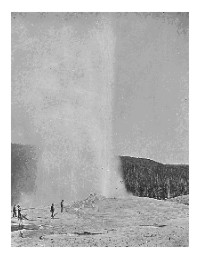Click here to Sponsor the page and how to reserve your ad.
-
Timeline
1873 - Detail
May 27, 1873 - The first running of the Preakness Stakes horse race, second in the leg of today's Triple Crown, debuts in Baltimore, Maryland in front of a crowd of 12,000. The horse, Survivor, owned by John Chamberlain, won by ten lengths over six other horses in a time of 2:43, winning a victor's purse of $1,850.

The idea of the Triple Crown was still in the future, with the third race, the Kentucky Derby not yet born, and the first, the Belmont Stakes, only six years old. But it was time for the second leg of the eventual Triple Crown to race for the first time, simultaneously the second of those races to run at all.
How did the race get its name? Governor Oden Bowie of Maryland, instrumental in the construction of Pimlico Race Track, also named the race. A horse named Preakness had won the main race, the Dinner Party Stakes, on the day the track opened on October 25, 1870. Thus the stakes to come would be named Preakness.
The first Preakness Stakes would occur two and one half years later, on May 27, 1873. It was a Tuesday, unlike today's Saturday dates, and the stands, painted violet, were filled with twelve thousand race fans. The race, won by the horse Survivor by ten lengths, commanded by jockey George Barbee and trained by A. Davis Prior, completed the one and one half mile race in 2:43. Purse was $3,000. There is some disagreement in the record books about that amount, with some stating only $1,000, others in between. The margin of victory still stands as the largest in Preakness history.
Note: There is some disagreement amongst sources about the date, May 27 or 23, and the purse, as noted above. Accept whichever you wish, although the date of May 27, 1873, seems verified by newspaper reports of the day.
Newspaper Report, New York Times, 1873 Race
THE TURF
First Day of the Baltimore Meeting - Four Races
BALTIMORE, Md., May 27. - This was the first day of the races over the Pimlico Course. The attendance was good, and the track in fine condition.
FIRST RACE - Hurdle race, for all ages, welter weights, two miles, over eight hurdles. Purse, $400. Two horses started. Lochiel won the race, beating Stockwood. Time: 4:19. Stockwood bolted at the third hurdle, thus giving the race to Lochiel.
SECOND RACE - Preakness Stakes: for three year olds; one and a half miles. $50 entrance, play or pay; club to add $1,000, of which $200 to the second horse. Seven animals started. Survivor came in first, followed by John Boulger, Artest, and Catesby in the same order. Oaklands, Joe Johnson and Periwinkle were ruled out. Time - 2:48. Before the start Catesby was the favorite, and commanded odds.
THIRD RACE - Handicap Stakes: for four year olds, of $50 each, half forfeit; only $10 if declared out; club to add $500, of which $100 to second; mile heats. Six horses started, and the race was won by Business.
FOURTH RACE - Purse, $700; three miles for all ages; $600 to first horse, and $100 to second. Four horses started. Merriman won the race, followed by Lucy Jackson, Gays and Edwin in the same order. Time - 5:46 1/2.

History of Pimlico Race Track
While the Belmont Stakes would be run on four courses since its inception, with the last, Belmont Park, opening in 1905, for the Preakness Stakes, they got their permanent home right off the bat. Pimlico Race Track would open on October 25, 1870, prompted by a competition between Saratoga and the American Jockey Club versus the Governor of Maryland Oden Bowie. He said that if they won the right to host, they would build a model track in Baltimore. They won.
There was a race hiatus for Pimlico from 1890 to 1908 when the Preakness Stakes was run at other tracks. The Maryland Jockey Club had come upon hard times. In 1889, the event was held at Morris Park in New York. For the next three years, it was not run at all. For the next fifteen years, 1894-1908, it was run at Gravesend in New York. Starting with the May 12, 1909 Preakness, the race has had Pimlico as its only home, even during the anti-betting years around 1910 when gambling, and thus horse racing, was attempted to be banned in most states in the nation, except Maryland and Kentucky.
Old Hilltop rose in the infield, a favorite place to gather, until, in 1938, it was removed because of the difficulty to see the backstretch and the need of the television crews to film the entire race. Six years earlier, the Preakness began the tradition of running two weeks after the Kentucky Derby. During the 1930's, the moniker of the Triple Crown began use to describe the three famous races; the Kentucky Derby, the Preakness, and the Belmont Stakes.
The Preakness has been run at several distances; since 1925, it has raced at the traditional mile and three sixteenths.
Photo above: Count Fleet on his way to victory in the 1943 Preakness, 1943, Arthur S. Siegel. Courtesy Library of Congress. Below: Portrait of Maryland Governor Oden Bowie, originator of Pimlico Race Track and Preakness Stakes, 1912, Katherine Walton. Courtesy Maryland Archives via Wikipedia Commons; (right) Presentation of the 1943 Preakness Cup to the owners and jockey of Count Fleet, 1943, Arthur S. Siegel. Courtesy Library of Congress. Info Source: pimlico.com; kentuckyderby.com; twinspires.com; "The Preakness Story Began in 1873," 1999, Baltimore Sun; Wikipedia Commons.
There was a race hiatus for Pimlico from 1890 to 1908 when the Preakness Stakes was run at other tracks. The Maryland Jockey Club had come upon hard times. In 1889, the event was held at Morris Park in New York. For the next three years, it was not run at all. For the next fifteen years, 1894-1908, it was run at Gravesend in New York. Starting with the May 12, 1909 Preakness, the race has had Pimlico as its only home, even during the anti-betting years around 1910 when gambling, and thus horse racing, was attempted to be banned in most states in the nation, except Maryland and Kentucky.
Old Hilltop rose in the infield, a favorite place to gather, until, in 1938, it was removed because of the difficulty to see the backstretch and the need of the television crews to film the entire race. Six years earlier, the Preakness began the tradition of running two weeks after the Kentucky Derby. During the 1930's, the moniker of the Triple Crown began use to describe the three famous races; the Kentucky Derby, the Preakness, and the Belmont Stakes.
The Preakness has been run at several distances; since 1925, it has raced at the traditional mile and three sixteenths.
Photo above: Count Fleet on his way to victory in the 1943 Preakness, 1943, Arthur S. Siegel. Courtesy Library of Congress. Below: Portrait of Maryland Governor Oden Bowie, originator of Pimlico Race Track and Preakness Stakes, 1912, Katherine Walton. Courtesy Maryland Archives via Wikipedia Commons; (right) Presentation of the 1943 Preakness Cup to the owners and jockey of Count Fleet, 1943, Arthur S. Siegel. Courtesy Library of Congress. Info Source: pimlico.com; kentuckyderby.com; twinspires.com; "The Preakness Story Began in 1873," 1999, Baltimore Sun; Wikipedia Commons.






